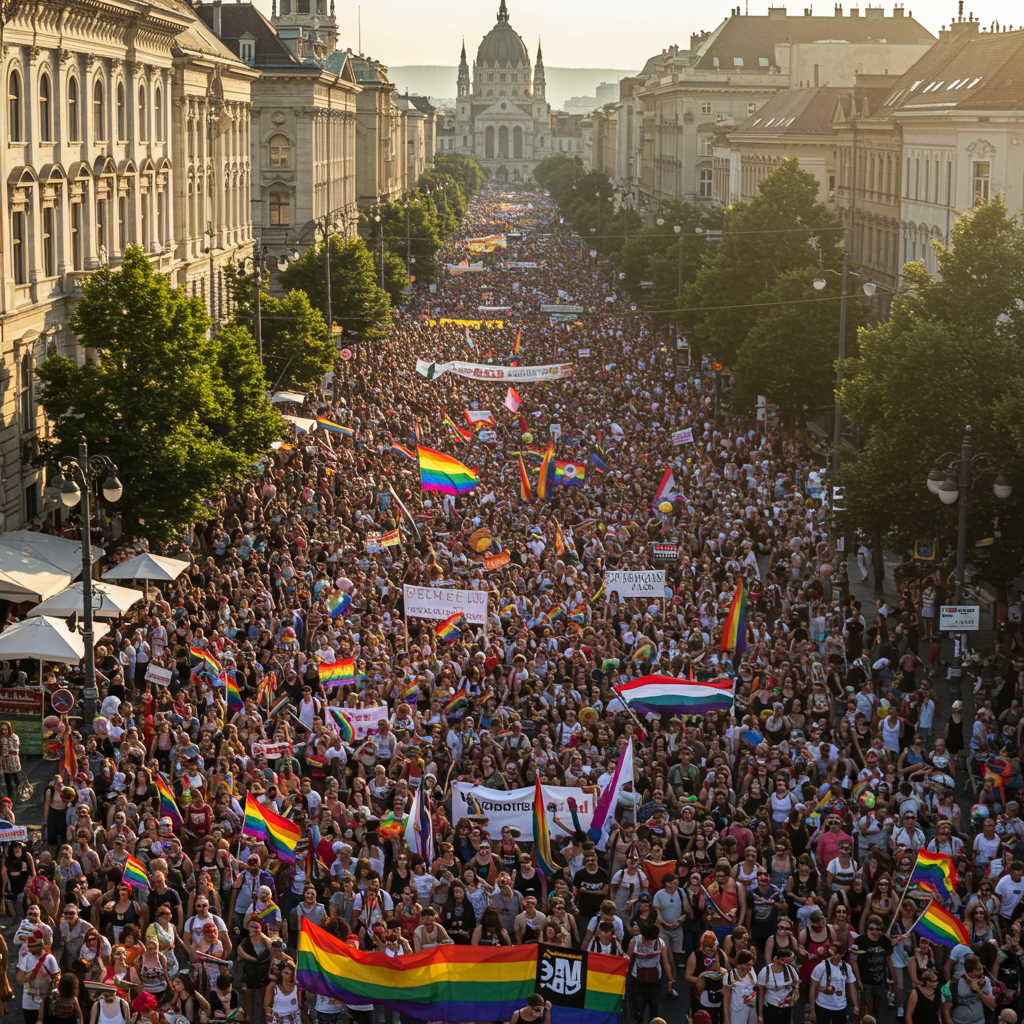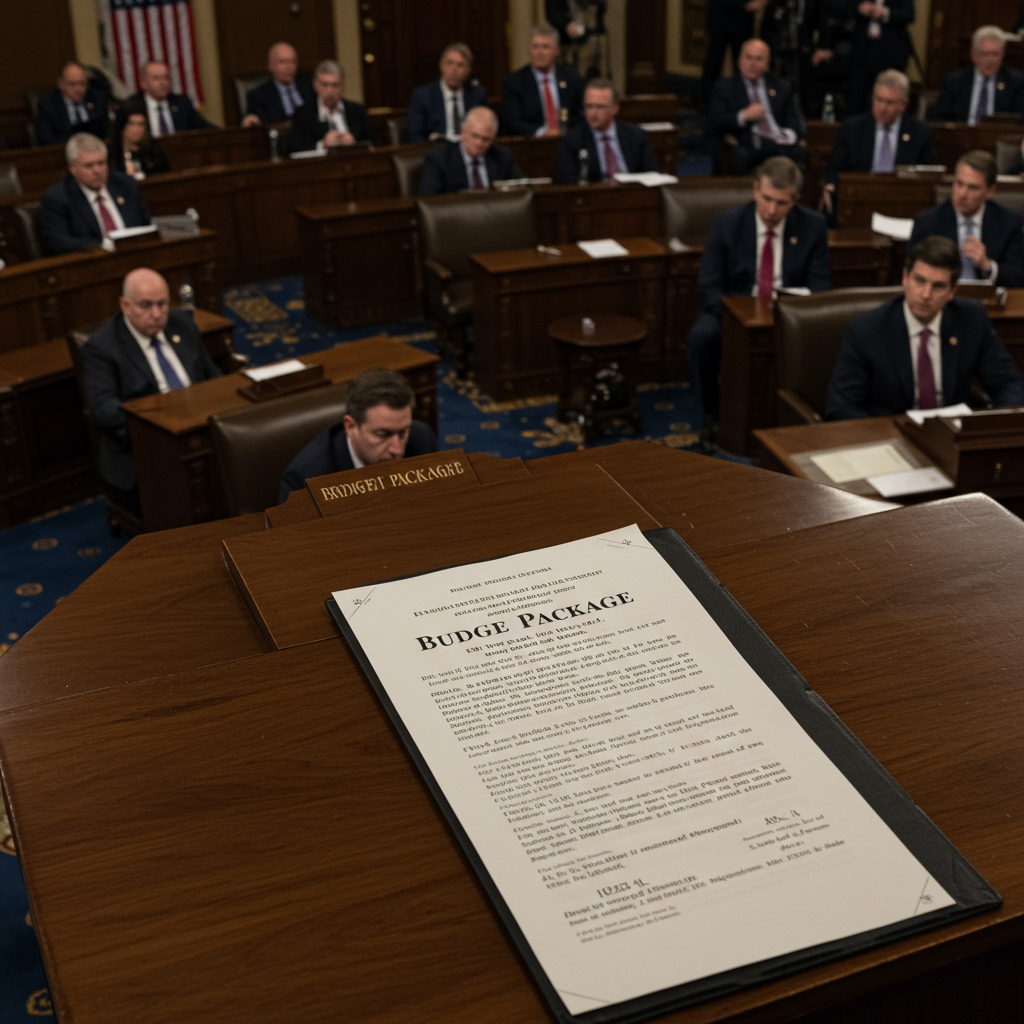Amidst scorching summer heat, a massive crowd flooded the streets of <a href="https://news.quantosei.com/2025/06/29/serbia-police-clash-with-anti-government-protesters-in-belgrade/” title=”Serbia Police Clash: Protests Erupt in Belgrade Over Vucic Rule”>budapest, transforming the city’s core into a vibrant display of defiance. Estimates soared between 100,000 and 200,000 participants, creating one of the largest Budapest Pride events in history. This extraordinary turnout sent an undeniable message directly to Prime Minister Viktor Orban and his government. Many attendees stated they were specifically motivated to participate because the government had attempted to ban the march, turning the event into a powerful symbol of resistance against escalating restrictions on civil liberties.
The sheer scale of the demonstration dwarfed previous years’ attendance, significantly exceeding the 35,000 participants from the prior event. What began as a celebration for the LGBTQ+ community quickly broadened into a vibrant expression of solidarity for human rights and freedom of assembly for all. The atmosphere pulsed with energy as people danced, sang, and marched across iconic landmarks like the Elizabeth Bridge, occupying riverbanks and downtown areas. This journey, normally a quick walk, became a joyous, hours-long parade.
Defiance on Display: Banners and Slogans
The streets became a canvas for protest and satire. Participants carried countless banners and wore T-shirts openly mocking Prime Minister Orban. One popular image featured his face adorned with bright eyeshadow and lipstick, widely seen as a playful yet pointed form of “peaceful revenge.”
Hand-made signs reflected deep political frustration. Messages like “In my history class, I learnt enough, to recognise a dictatorship. You don’t need to illustrate it – Vik!” highlighted concerns about Hungary’s political direction. Another blunt banner simply declared, “I’m so bored of Fascism.” These visual statements underlined the participants’ view of the march as a direct response to 15 years of Orban’s rule and policies they perceive as increasingly authoritarian.
The Attempted Ban and “Child Protection” Law
The government’s effort to prohibit the Budapest Pride march stemmed from a controversial new law. Passed with the strong majority of Orban’s Fidesz party, this legislation subordinates the fundamental right to freedom of assembly. It does this by linking assembly restrictions to a 2021 “Child Protection” law.
This earlier law controversially equates homosexuality with paedophilia. Consequently, it bans the portrayal or promotion of homosexuality in settings where children might potentially see it. Police cited this specific law as the basis for attempting to ban the Pride march, arguing that children could witness the event.
Local Leadership Stands Firm
Budapest Mayor Gergely Karacsony, a key opposition figure, emerged as a co-organiser and vocal champion of the march. He directly challenged the government’s legal rationale for the ban. Karacsony cited a 2001 law, arguing that events organised by municipal councils, like the Pride march, fall outside the specific assembly restrictions being used by the government.
Addressing the immense crowd gathered before the Budapest Technical University, a beaming Karacsony underscored the significance of the day. “We don’t exactly look as though we were banned!” he quipped to thunderous applause. He framed the event as a victory for the city hall, which often faces financial strain and political conflict with the central government. “We look like we’re peacefully and freely performing a big, fat show to a puffed-up and hateful power,” he declared. “The message is clear: they have no power over us!”
International Solidarity and Broader Context
The Budapest Pride march attracted significant international attention and support. Members of the European Parliament (MEPs) and other EU officials were present to show solidarity. Finnish MEP Li Andersson emphasized that her presence, and that of others, transcended just supporting Pride. She argued that the event was fundamentally about the basic human rights of all people.
Andersson viewed the government’s use of “family values” arguments as a mere pretext to justify banning a march centered on equality and the right to love freely. This perspective was echoed by EU equalities commissioner Hadja Lahbib, who attended and described the march as a “powerful symbol of the strength of the civil society.” Over 30 embassies in Budapest also issued statements expressing solidarity with the event and the LGBTQ+ community.
EU Concerns and Political Strategy
The European Parliament, particularly groups like the Socialists and the Greens/EFA, voiced strong condemnation of the Hungarian government’s actions. They highlighted breaches of fundamental EU values like human dignity, freedom, and equality, calling the attempted ban a “cowardly attack” and a “clear display of authoritarianism.” They explicitly referenced the opinion of a European Court of Justice Attorney General, who found Orban’s “Child Act” to be a clear violation of fundamental rights. These groups called on the European Commission and Member States to use all available tools, including potentially Article 7(2) proceedings, to address rule of law concerns in Hungary.
Political analysts suggested a deeper strategic layer to the government’s actions. Some speculate the ban was a deliberate attempt to provoke Peter Magyar, leader of the newly prominent TISZA party, Hungary’s main opposition force. Magyar’s party has gained significant traction by focusing on everyday issues like economic hardship, healthcare, and corruption, drawing support from a broad ideological spectrum. Fidesz, reportedly struggling to counter Magyar’s appeal, may have hoped to force him to take a divisive stance on a liberal social issue like LGBTQ+ rights, potentially alienating his more conservative supporters. Magyar largely sidestepped this trap, posting support for the march attendees’ right to state protection but focusing his political messaging elsewhere. This dynamic underscores the complex political maneuvering underway in Hungary ahead of the 2026 election.
The Government’s Counter-Narrative and Response
While the massive march was underway, Prime Minister Orban attended a graduation ceremony for new police and customs officers elsewhere in the city. He addressed the graduates, stating that “Order does not come into being by itself, it must be created, because without it civilised life will be lost.” This speech offered a contrasting vision to the lively demonstration downtown.
Earlier in the day, Orban and other Fidesz officials engaged in a social media counter-campaign. They posted pictures of themselves with their children and grandchildren, explicitly stating they were “reclaiming” the word “pride.” Alexandra Szentkiralyi, head of the Fidesz faction in the Budapest Council, posted a photo in a “Hungary” T-shirt urging others to “Post a picture, to show them what we’re proud of.” This was a clear attempt to redirect the concept of pride towards traditional family values and national identity, away from LGBTQ+ rights.
Pro-government media outlets launched scathing attacks on the march. They echoed remarks from leading Fidesz politicians, labeling the event a “celebration of perversity” with no connection to freedom of assembly. Headlines in outlets like Magyar Nemzet proclaimed “Chaos at Budapest Pride.” They also attempted to discredit attendees, specifically mentioning climate activist Greta Thunberg’s presence and labelling her a “terrorist supporter.”
Legal Shadows and Future Battles
Despite the massive, peaceful turnout, the event occurred under the shadow of potential legal repercussions. A law passed on March 18th, linked to the assembly ban attempts, grants police new powers, including the use of facial recognition technology to identify participants. Attendees could face potential fines ranging from £14 ($19) to £430 (€500), while organizers could face up to a year in prison if prosecuted and convicted.
Police officers present at the march maintained a discreet presence, observing from a distance. However, temporary cameras mounted on police vehicles were used to record the entire event, raising concerns about surveillance. The legality of the march remains subject to judicial review. Political analyst Zoltan Kiszelly, close to the government, indicated that the courts would ultimately decide the matter. If courts rule in favor of the mayor and organizers, Orban’s government might be forced to amend the legislation. Conversely, a ruling upholding the government’s ban, despite the march proceeding, could still be seen as a validation of the controversial law. This legal battle represents the next phase of the struggle between civil society and the government over fundamental rights in Hungary.
Frequently Asked Questions
Why did the Hungarian government try to ban Budapest Pride?
The government attempted to ban the march based on a new law linked to its 2021 “Child Protection” law. This legislation restricts public gatherings perceived as promoting homosexuality in places where children might see them, controversially equating homosexuality with paedophilia. Police cited the possibility of children being present as justification for the ban attempt.
Who attended and supported the Budapest Pride march?
Tens of thousands attended, ranging from 100,000 to 200,000 people, primarily young but also diverse in age and background, including many “first-timers” spurred by the ban attempt. Support came from Budapest Mayor Gergely Karacsony, numerous Members of the European Parliament (MEPs), EU officials, and over 30 international embassies. Civil society groups and individuals concerned with human rights and freedom of assembly also participated.
Were there legal risks for participants of the march?
Yes, despite the march proceeding, a recent law grants police powers including facial recognition technology to identify attendees. Participants could potentially face fines ranging up to approximately €500. Organizers faced the risk of prosecution with a potential sentence of up to one year in prison. The legality of the event is expected to be decided by the courts.
The massive turnout at Budapest Pride served as a powerful act of collective defiance against the Hungarian government’s restrictive policies. Despite attempted bans and legal threats, the event highlighted the deep division within Hungary and the resilience of civil society in advocating for human rights and freedoms. The coming months are likely to see further legal challenges and political maneuvering as the implications of this significant demonstration unfold, potentially influencing the landscape ahead of the next national election.



